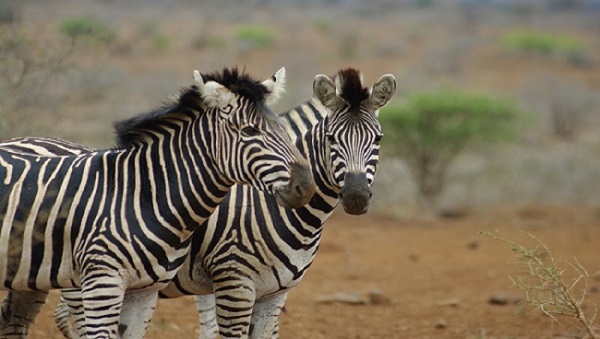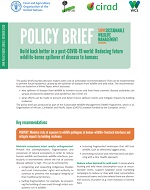|  ©FAO/H.Boulet ©FAO/H.Boulet
Context Wildlife and protected areas play an important role in contributing to the delivery of a range of ecosystem services that are essential to forests, food, and agriculture contributing to FAO’s goals of zero hunger and the reduction of poverty. Conservation and sustainable use of biodiversity is a prerequisite for the long-term continuation of forest ecosystem services, and for this reason, forest biological diversity is recognized as one of the 7 sustainable forest management (SFM) criteria. Forests also provide a home for more than 80% of all known species of animals, plants and insects. While the primary aim of protected areas is conservation of biodiversity, well-managed protected areas also generate multiple benefits for sustainable social and economic development. A sustainable use approach The sustainable management of wildlife (SWM) and protected areas supports SFM and biodiversity conservation. Its role is becoming more prominent due to continuing global pressures on wildlife and protected areas from increasing human population, urbanization, and changing lifestyles. In tackling these issues, the following four areas are particularly relevant: - Maintaining ecological balance: Wildlife and protected areas make a crucial contribution to the maintenance of forest ecological services and ecosystem health, and play a fundamental role in ecological processes such as pollination, seed dispersal, decomposition, and pest control. Extreme declines in wildlife throughout the world may negatively affect these important functions in the future.
- Wild meat: Millions of people depend on wildlife as a means of subsistence. Wild meat is an essential part of the diet for rural communities and indigenous peoples, particularly in tropical and sub-tropical regions of the world. Current unsustainable harvesting rates, driven by an increase in demand, have caused significant declines in many species, impacting on the food security of vulnerable households, and global biodiversity.
- Human wildlife conflicts (HWC): HWC have become more frequent and severe over recent decades as a result of human population growth and the expansion of agricultural and industrial activities. In developing countries whose economies are agriculturally based, this has significant negative impacts on food security and well-being of community livelihoods. Climate change is exacerbating these conflicts through increased competition for water and habitats.
- Protected areas: Protected areas are a key strategic approach for conservation, and the sustainable use of wildlife, as they offer habitat to many wildlife species. Particularly in Africa where these areas are where the most intact amount and variety of Africa’s wildlife are found. They play a pivotal role in balancing agricultural production with protection objectives through integrated land use. In this way SWM can be viewed as a mechanism to promote biodiversity conservation inside protected areas, while simultaneously meeting human needs.
FAO’s role FAO promotes SWM within protected areas and across all habitats as a key element in achieving sustained nutrition and income for rural populations and indigenous people, and achieving its goal of zero hunger. As well as safeguarding human and environmental health SWM contributes to the reduction of rural poverty and the improvement of livelihoods. Through the Wildlife and Protected Areas Management Programme, FAO is actively involved in supporting Member countries to: - develop innovative mechanisms to reduce unsustainable hunting practices;
- promote the sustainable use and management of wild meat;
- provide technical assistance and strengthen capacities to deal with human wildlife conflicts;
- enhance cross-border collaboration and strengthen the governance of protected areas;
- design and implement relevant field projects and initiatives.
The FAO Forestry Division (until August 2020 Forestry Department) has served as the secretariat for the Collaborative Partnership on Sustainable Wildlife Management (CPW) since 2013. We are actively engaged in a wide range of the CPW’s initiatives as a proactive member of the Partnership.
| 


